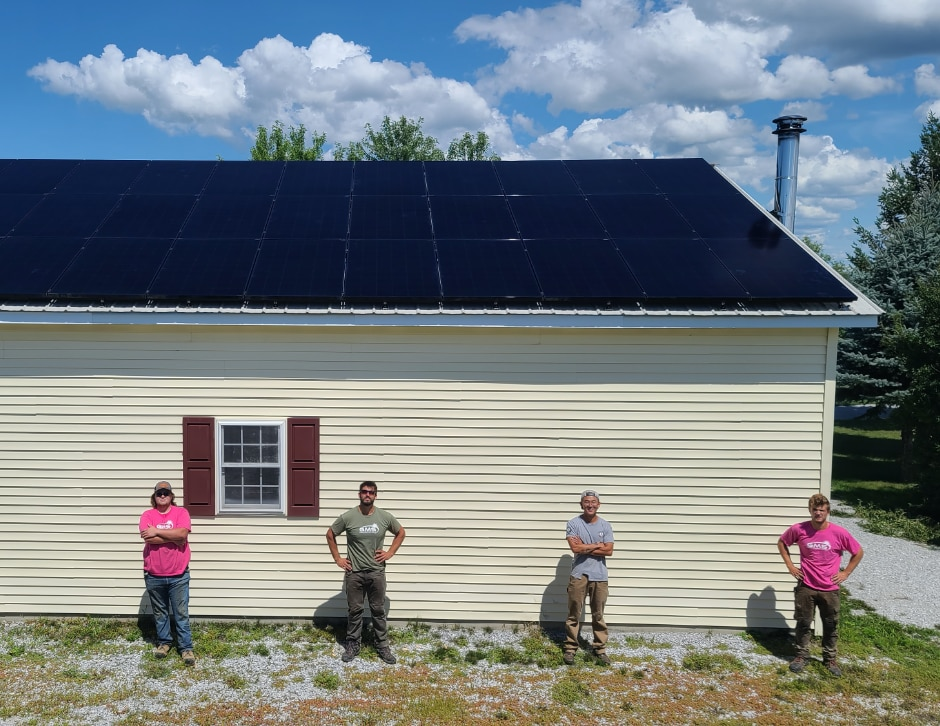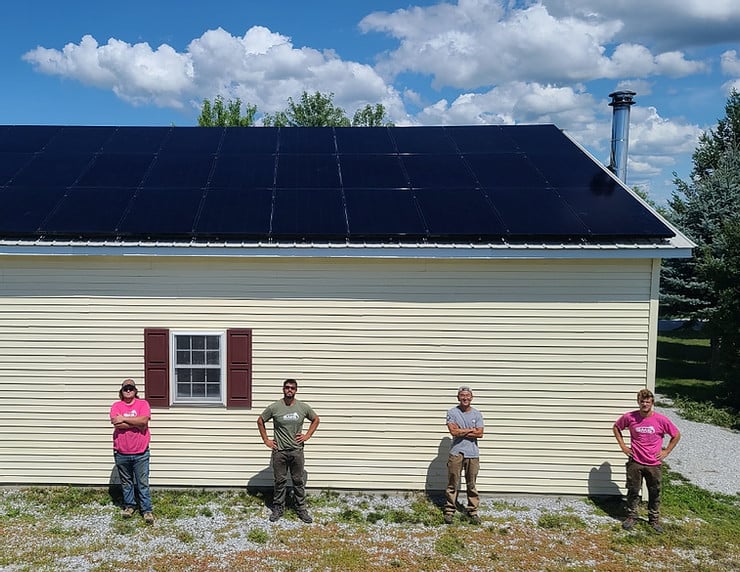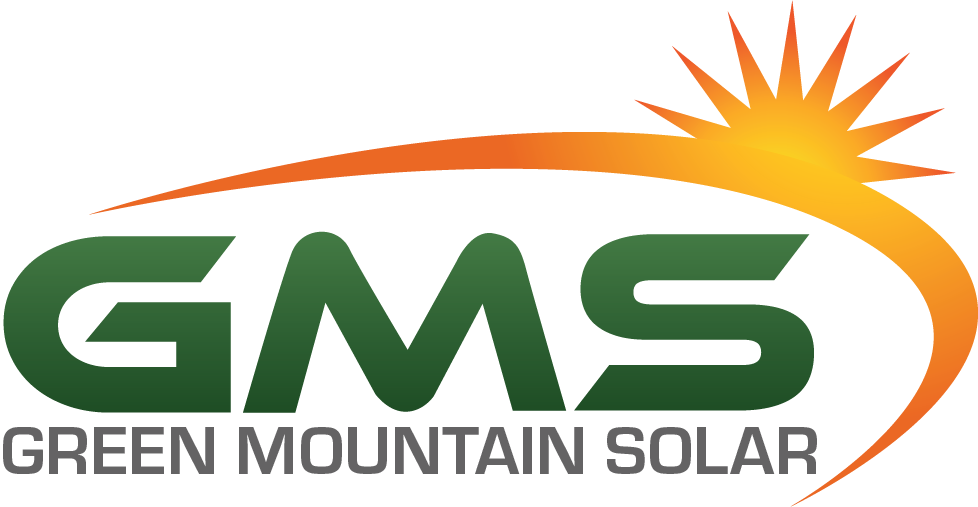Ask an Installer: 7 Questions This Solar Company Hears All the Time

Want the inside scoop on going solar—before you go solar? We asked our install crew what questions customers ask all the time. Here’s what they said.

No one knows solar panels quite like the team that installs them. From installation to troubleshooting, this crew has seen it all. Ben McFeeters, lead solar and battery technician at Green Mountain Solar, answers the most common solar installation questions he gets all the time.
How do you install solar panels?
Measuring everything first is very important. We get on the roof and check the measurements that the sales team has taken and verified that the layout that was talked about will fit. If it doesn’t fit—which happens occasionally—we work with the customer and the solar advisor to adjust the design.
Then we start by snapping lines to make sure everything is square and sounding out the rafters. We have a variety of mounting options to feet different types of roofing. For shingle roofs, we use our flashing plates and feet to drill into the rafters. If it’s a standing seam roof, we have clips that go into the standing seam—they don’t penetrate the roof at all. If it’s a corrugated roof, we have attachments for those as well.
Then, the microinverters go on the rail and all the wiring happens. The micros get wired to a junction box and then panels go on. It’s a pretty quick process. We can do a 30- to 40-panel system in a day.
Are the rails going to overhang the roof like that?
We get asked this a lot during the installation. The answer is no. When we put rails on the roof, they come in 14-foot lengths. So, a lot of the time the rail overhangs the roof by four or five feet. We put them up there, put the panels on, and then cut the rails to length.
Will solar panels damage my roof?
No, they won’t. They’ll actually protect the roofing underneath because it doesn’t get as hot, snow-covered, or ice-covered. All of the products that we use are meant to be on a roof—there’s nothing that’s going to rust. I’ve removed systems where the roof around the panels is ready to be replaced and underneath the panels is in much better shape.
How do you prevent roof leaks?
We only drill holes where we’re going to put a flashing plate. We sound out the rafters and then drill a pilot hole to make sure we hit the rafter and then put a flashing plate over it. Then we use a high-quality sealant with a 50-year rating on it to ensure that if any water gets under there—which it’s doubtful that it would—it won’t get into your house.
How big of a problem are squirrels?
Squirrels can be a big problem. I recommend to people they make sure there are no branches hanging down or easy access for squirrels to get on the roof. What I’ve seen with panels that have been damaged by squirrels is that there’s a large branch going right to the roof. (What the squirrels do is they build their nest under there and they have their babies and the babies chew on the wires because their teeth are growing, and they need to chew on stuff—they just chew on anything that they can.) With the systems we use, there really isn’t a risk of fire if the wires do get damaged, but it’s not ideal and could be costly. We can also do squirrel guards (but they can be a little unsightly) so trimming your trees is usually the best option.
Are my gutters still going to work?
Yes, generally. There have been occasions where the array is too big and it will overshoot the gutters, but we try to not do that and this is something we’d talk to the customer about first.
Will I have to cut down trees?
Our sales guys can typically point out any trees that are shading the array ahead of installation. Fortunately, with the microinverters, you will be able to see these panels are producing a lot less than those panels over there and then look outside and see if they’re being really badly shaded at this time. That is the nice part about microinverters—it’s just the panels that are shaded that will put out less, not the rest of the array. This means, if you’re on the fence about taking down a tree, you can take a wait and see approach and not have to worry that your entire array will be underproducing.
By Julia Westbrook
Ready to go solar yourself? Contact us for a free site visit today.

Leave a Comment